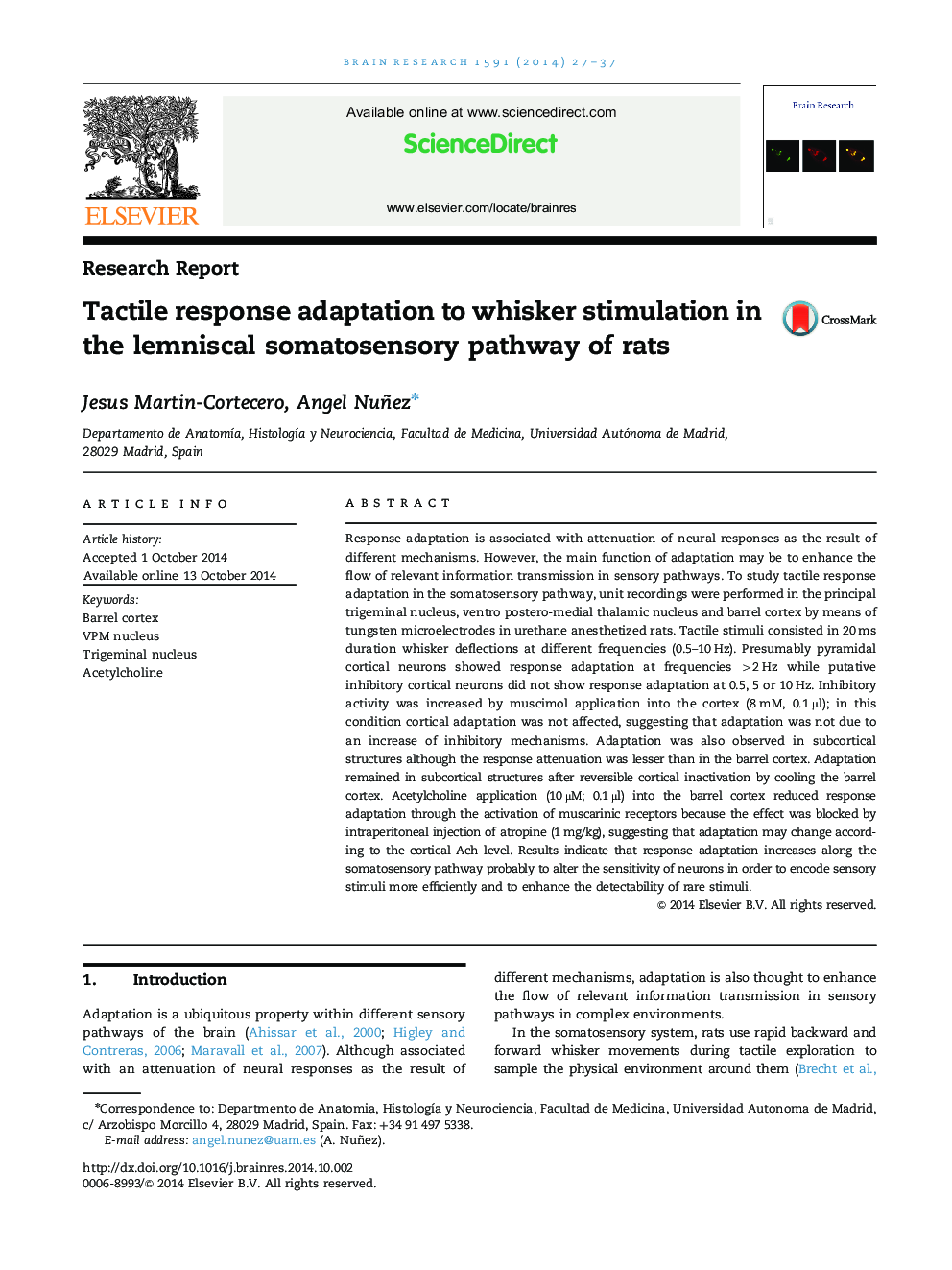| Article ID | Journal | Published Year | Pages | File Type |
|---|---|---|---|---|
| 6263220 | Brain Research | 2014 | 11 Pages |
â¢Response adaptation appears at all levels of the somatosensory pathway.â¢It is larger in barrel cortex than in the principal trigeminal or thalamic nuclei.â¢Response adaptation decreases in presence of acetylcholine in the cortex.â¢Response adaptation enhances flow of information in the somatosensory pathway.
Response adaptation is associated with attenuation of neural responses as the result of different mechanisms. However, the main function of adaptation may be to enhance the flow of relevant information transmission in sensory pathways. To study tactile response adaptation in the somatosensory pathway, unit recordings were performed in the principal trigeminal nucleus, ventro postero-medial thalamic nucleus and barrel cortex by means of tungsten microelectrodes in urethane anesthetized rats. Tactile stimuli consisted in 20 ms duration whisker deflections at different frequencies (0.5-10 Hz). Presumably pyramidal cortical neurons showed response adaptation at frequencies >2 Hz while putative inhibitory cortical neurons did not show response adaptation at 0.5, 5 or 10 Hz. Inhibitory activity was increased by muscimol application into the cortex (8 mM, 0.1 µl); in this condition cortical adaptation was not affected, suggesting that adaptation was not due to an increase of inhibitory mechanisms. Adaptation was also observed in subcortical structures although the response attenuation was lesser than in the barrel cortex. Adaptation remained in subcortical structures after reversible cortical inactivation by cooling the barrel cortex. Acetylcholine application (10 μM; 0.1 μl) into the barrel cortex reduced response adaptation through the activation of muscarinic receptors because the effect was blocked by intraperitoneal injection of atropine (1 mg/kg), suggesting that adaptation may change according to the cortical Ach level. Results indicate that response adaptation increases along the somatosensory pathway probably to alter the sensitivity of neurons in order to encode sensory stimuli more efficiently and to enhance the detectability of rare stimuli.
